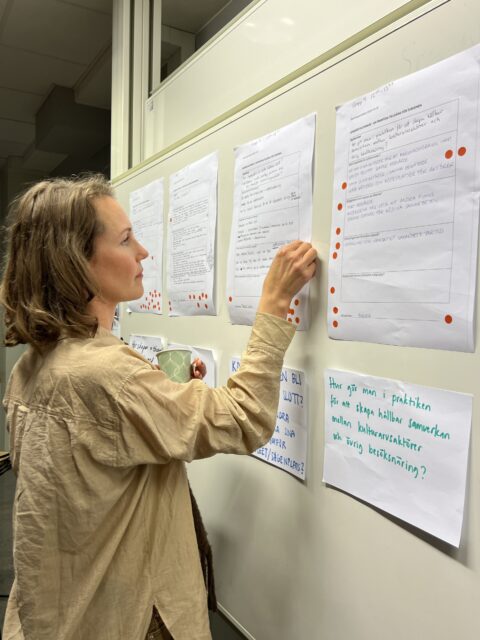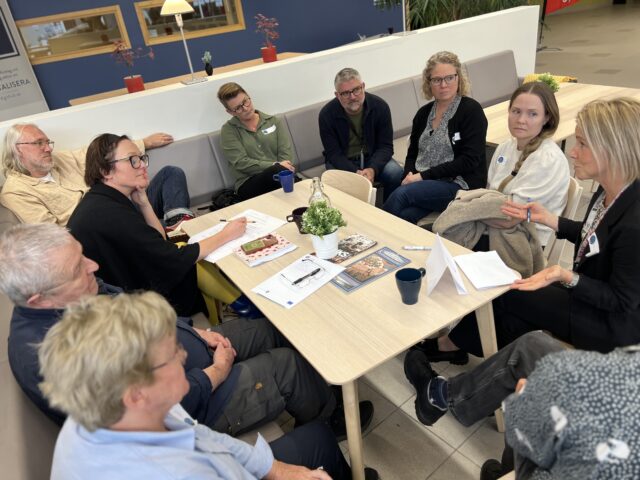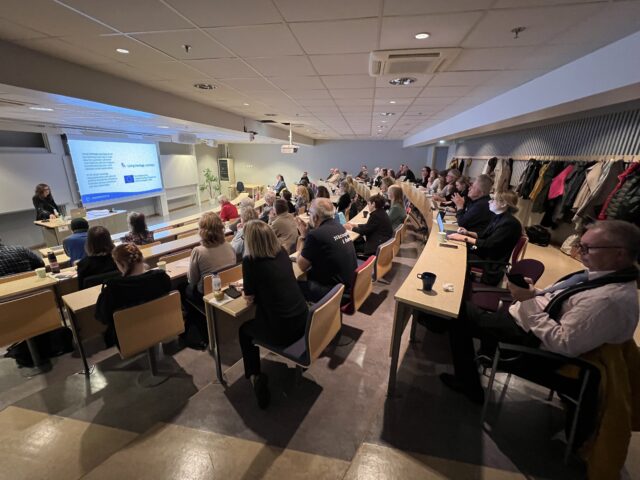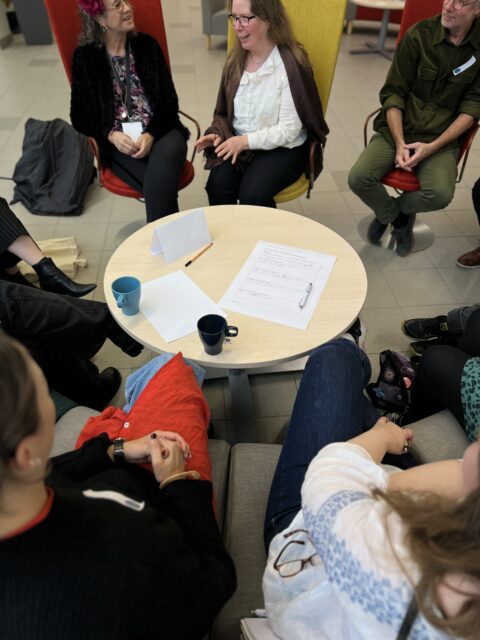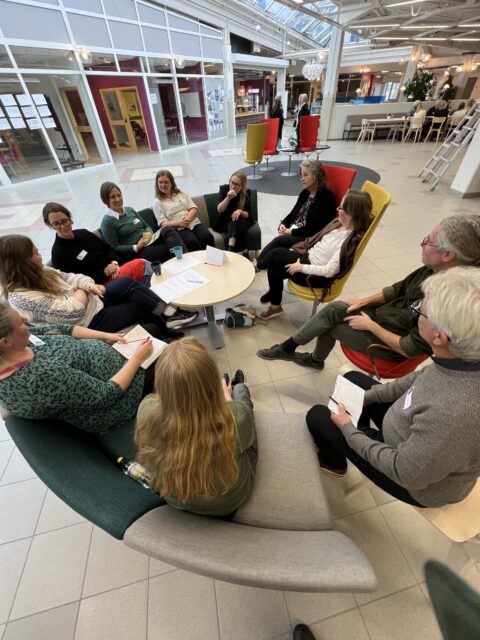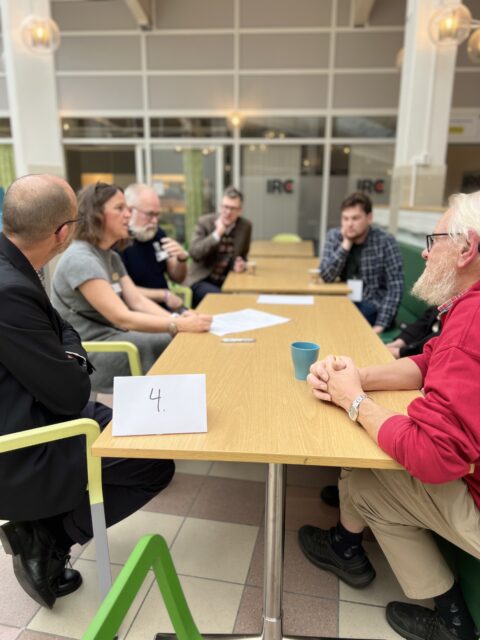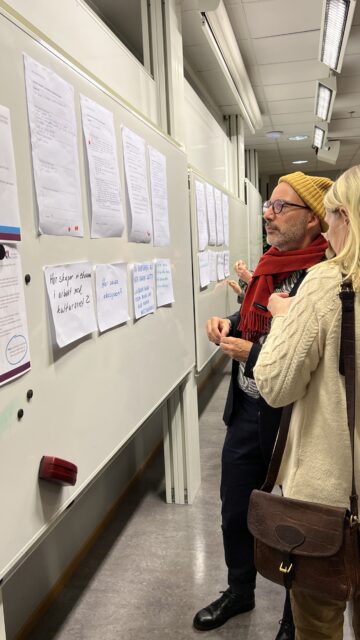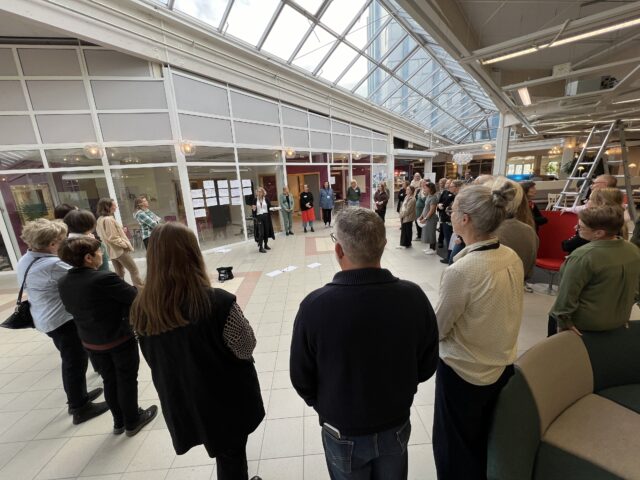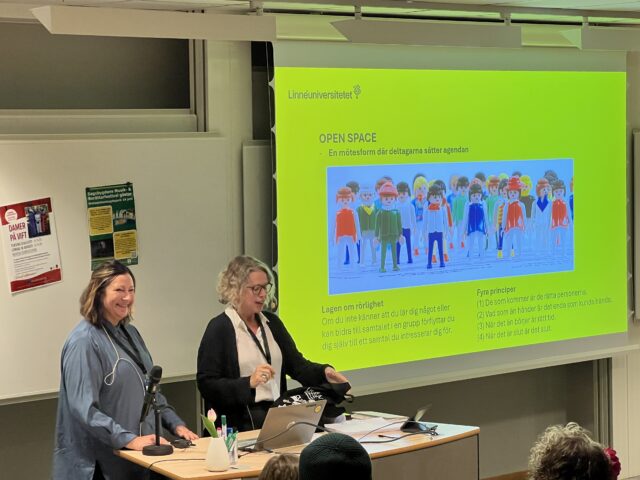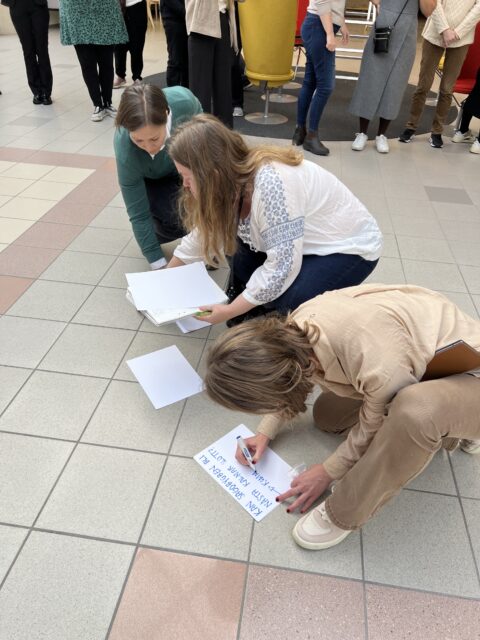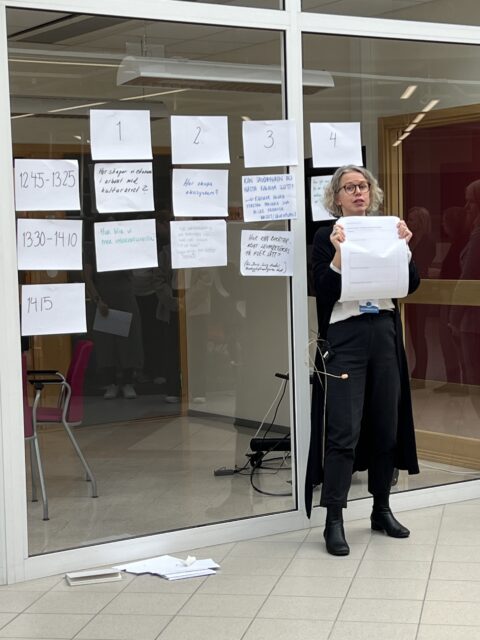Grasping the fundamentals
The first phase of the project gathers deep insights into the living heritage practices, heritage communities’ visions and wishes, visitor expectations, policy environments, and inspirational practices.
Here the Design thinking stages of Empathise and Define play a key role.
- Empathise involves a human-centred process to understand people and their needs.
- Define draws on the insights gathered to collaboratively determine the projects specific challenges and next steps.
Field research
Visitor questionnaire summer 2024: results
Visitors frequently mentioned the beautiful nature, including lakes, forests, and wildlife. The calm and peaceful atmosphere was highly valued, especially by those from more densely populated areas. The natural beauty was often interweaved with the cultural experience, as the landscape brought the stories to life.
Several visitors highlighted how the region is family-friendly, with activities such as the Legendary museum (Sagomuseet) being engaging for both adults and children. The interaction between children and nature or storytelling activities was specifically noted.
Visitors were primarily attracted by the relaxing atmosphere (4.48/5), local storytelling traditions (4.33/5), and the region's nature and landscape (4.47/5). Cultural interest, including learning more about local culture (4.16/5) and engaging with folklore and legends (4.21/5), was a significant motivator for visitors.
Learning about local culture (4.16) and engaging with local stories and folklore (4.21) are important to visitors, indicating a desire to connect more deeply with the area's cultural aspects. Meanwhile, the appeal of nature (4.47) and a fun experience (4.41) are key drivers of tourism.
Continue to promote the unique blend of nature and cultural heritage the region offers. Visitors were highly attracted by the relaxing atmosphere and the integration of storytelling with the landscape. More outdoor storytelling sessions could make better use of the natural setting.
Stakeholder Workshops
Believe in yourself—you will go further than you think is possible. And don’t be afraid to ask for help!
The goal for the first workshop was to gather staff from the three municipalities (Ljungby, Älmhult och Alvesta) and staff from Destination Småland to discuss the pre-study that was made by Destination Småland and ordered by the three municipalities with the aim to investigate whether Sagobygden has the prospect of becoming a destination.
A workshop on destination development for Sagobygden was held. Participants included representatives from Sagobygden, Berättarnätet Kronoberg, Ljungby Municipality, Alvesta Municipality, and Destination Småland. The discussion focused on the feasibility study of Sagobygden as a destination and the challenges of developing it as a tourist spot. It was noted that the term "Sagobygden" can be confusing, as it refers both to an organization and a geographic area. A key point was the need to create a shared brand for Sagobygden that involves multiple stakeholders, requiring collaboration and long-term investment.
It was emphasized that Sagobygden needs a long-term plan to develop both the operations and the destination, focusing on creating a holistic experience for visitors.
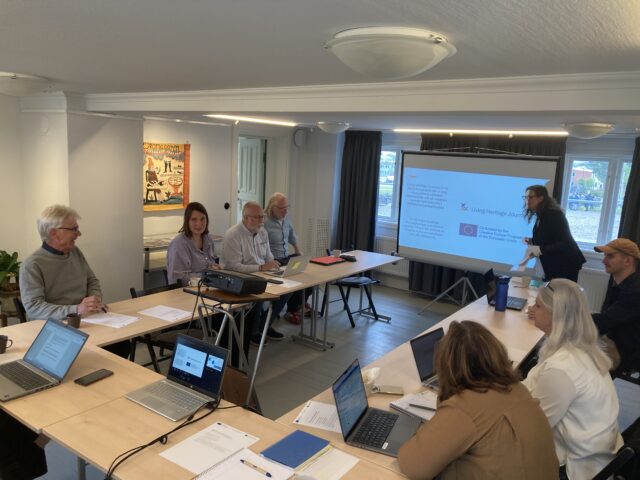
First prepilot workshop - © Lotta Welmsö
Second workshop
The goal of the second workshop was to create a space for inspiration and discussion around living cultural heritage and tourism.
We invited professor’s from the Linnaeus University, responsible authority for the UNESCO Convention 2003, the Institute for Languages and Folklore, and entrepreneurs with whom we have collaborated.
The lecturers discussed the significance of tourism for community development, focusing on attracting tourists to less-visited areas and niches, particularly rural and forest areas. By highlighting local stories and cultural heritage, these areas can become more appealing to visitors.
One important point was the economic impact of tourism on Sweden’s GDP and the paradox of tourism, where the most valuable experiences often provide lower economic returns. Emphasizing that sustainable tourism should be on the terms of the practitioners and provide economic benefits to local communities without reducing cultural resources.
The last part of the day was a creative and appreciated Open Space
Here the participants discussed various aspects of heritage tourism, such as how to create sustainable collaboration between stakeholders, how to make cultural heritage more internationally attractive, and how to develop ecosystems to support both local and international visitors. Ideas emerged about creating networks between different actors, collaborating across sector boundaries, and how stories can be used to deepen the appeal of places.
In summary, the conference discussed the importance of using cultural heritage to develop sustainable tourism through collaboration between local communities, cultural heritage practitioners, and the tourism industry.
Some first workshop’s results in key points
- Emphasized the need for a shared brand to involve multiple stakeholders.
- The necessity of a long-term plan for both operations and destination development
- Highlighted the economic paradox where the most valuable tourism experiences often bring lower financial returns.
- Collaboration, cross-sector partnerships, and using stories to deepen place appeal were key themes.
- Digital tools (e.g., Google Maps) have changed how visitors discover stories and locations.
- Storytelling remains central, emphasizing the interaction between the storyteller and the listener.
Collaboration with local businesses is key to creating a holistic experience, and locals should act as ambassadors for the destination
Second prepilot workshop - © Lotta Welmsö
The goal of the third and last workshop was to give the members of the Storytelling Network the possibility to talk about the origins of the network and how they have experienced the development from being a small NGO to today having 10 employees.
Initially, the focus was on reaching the local population, but over time, tourism has become more central, which was not part of the original plan.
The museum now has 10,000 visitors and attracts tourists from various countries but mostly from Germany, Denmark and The Netherlands.
A recurring theme is that storytelling is at the core, and it is the interaction between the storyteller and the listener that creates the experience.
Several participants reflect on how tourism and the familiar atmosphere can coexist, and how to manage growth without losing the personal touch. The risk of becoming too large and commercialized is raised, as well as the importance of maintaining a balance between attracting more visitors and preserving the intimate atmosphere. There is also discussion on how to collaborate with local businesses to create a more holistic experience and how every individual in the area can serve as an ambassador for Sagobygden.
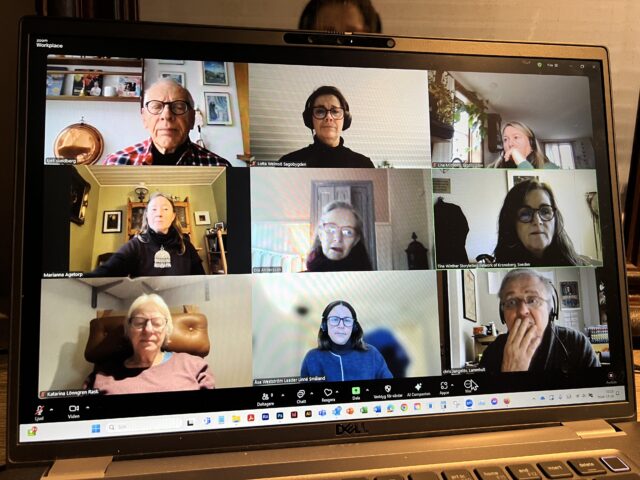
Third prepilot workshop - © Lotta Welmsö
Lessons learned in Fase 1
How can Intangible Cultural Heritage become a source of income or be self-financing?
1. Challenges
- The importance of having a clear concept (meaning/description).
- In our case, Sagobygden is both a geographical area and a brand name.
- Identity is important.
Sagobygden encompasses a very broad range of activities. It appeals to many target groups—in fact, everyone. This makes it difficult to market the whole concept.
Is the organisation growing too fast? Is there a breaking point? How do you find balance?
2. Points of advice
- Work on strong local anchoring before expanding outward.
- Networking is important—especially in smaller communities. Together, you are stronger.
- It is important to have a long-term plan for your activities.
- Dare to stay relevant! Be attentive and follow trends. Find synergies that align with your operations. In our case, for example, nature tourism and history.
- Create products with symbolic value for your work. This contributes to income and extends the visitor’s experience/memory as they save or take the product home.
- It is essential to be searchable. Be digitally visible and clear. Keep an eye on how your organisation is presented in Google searches, on TripAdvisor, etc.
- Have fun! Be proud!
- Organise an annual event or manifestation for your organisation. Invite guests and share the experience. In our case, Sagobygden’s Music and Storytelling Festival.
